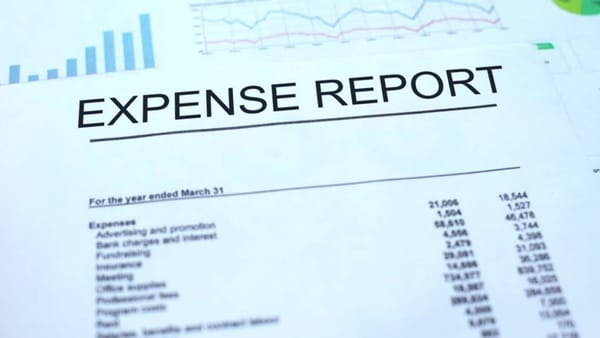Why is working capital more important than profit?

In the realm of business, profit has long been the North Star, guiding companies toward perceived success and influence. But what if this age-old beacon is not the most critical measure of business health and sustainable growth? Venturing beyond the familiar landscape of profit margins, a more nuanced financial concept emerges as a contender for the throne: working capital. When it comes to the day-to-day viability of a company, the showdown between working capital vs profit often reveals a truth that can either fortify a company's foundation or send it tumbling down.
This paradigm shift puts the spotlight on working capital over profit and positions it as the linchpin of operational agility. The intricate dance of assets and liabilities isn't just a matter of balance sheets—it's the lifeblood of any business, dictating whether it can thrive amid market volatilities or crumble under the weight of short-term debts. But why does working capital command such importance, and could it indeed be the cornerstone of sustainable growth and business health? As we peel back the layers of financial jargon, a compelling narrative unfolds, one where resilience is born from liquidity and foresight from fiscal prudence.
Key Takeaways
- Discover why working capital is a critical indicator of operational efficacy and a key determinant of business resilience.
- Uncover the subtle yet profound differences between working capital and profit in the context of daily business sustainability.
- Explore the immediate benefits of prioritising working capital, such as maintaining liquidity and funding short-term expenses.
- Gain insights into the role of effective working capital management in seizing growth opportunities and handling unexpected expenditures.
- Learn why an emphasis on working capital over profit can safeguard a company’s future and foster long-term stability.
Understanding the Basics: Working Capital Definition
In the financial anatomy of a business, working capital is a core element, representing the liquidity available for day-to-day operations. Defining working capital essentially comes down to understanding its role as the difference between an entity's current assets and current liabilities. This metric is a barometer for gauging a company's operational efficiency and its capacity to meet short-term obligations without necessitating additional financing.
Working capital management is a strategic business practice that ensures a firm maintains sufficient fluidity to manage its routine financial activities effectively. In essence, it's a balancing act of maintaining adequate levels to sustain daily operations while avoiding excessive capital that could otherwise be invested for expansion or diversification.
To delineate the constituents of working capital, consider the following breakdown:
- Current Assets: These include cash, accounts receivable, inventory, and other assets likely to be turned into cash within a year.
- Current Liabilities: This encompasses accounts payable, wages, taxes due, and any other debts or obligations that must be settled within a year.
Effective working capital management leverages these components to foster a company's agility and resilience, enabling it to capitalize on growth opportunities as well as cushioning it against financial challenges.
| Components of Working Capital | Implications for Liquidity | Impact on Business Operations |
|---|---|---|
| Cash & Cash Equivalents | Directly available funds for immediate needs and opportunities. | Sustains daily transactions and smooth operational continuity. |
| Accounts Receivable | Source of incoming funds; requires efficient collection processes. | Reflects revenue potential and turnover efficiency. |
| Inventory | Must be balanced to prevent overstocking or stockouts. | Influences sales fulfillment and production cycles. |
| Accounts Payable | A tightrope between timely payments and cash retention. | Affects supplier relationships and cost management. |
In the discourse of financial stability, the working capital definition is often juxtaposed against profit. However, revenue that cannot be mobilized effectively as working capital is seldom capable of sustaining a business during periods of constraint or when leveraging timely market positions. Thus, defining working capital and profit in tandem is crucial to recognizing their distinct roles in the pursuit of corporate success and longevity.
Defining Profit in Business Terms
The essence of a successful venture in the business landscape hinges on the realization of profit. By profit definition, it is the residual financial gain that remains when a company's total revenues outstrip the complete range of expenses, taxes, and other costs implicated in sustaining the enterprise's operations. This concept is a pivotal component in any financial arsenal, providing a quantifiable benchmark of commercial success and fiscal vigor over an extended period.
Highlights extend to the intricacies of profit margin, a measure that is not simply deduced from the quantum of profit, but also takes into account the relative proportion of profit generated per dollar of revenue. This ratio reflects the efficacy with which a company converts sales into profits, providing invaluable perspective on operational competence and pricing strategies.
Another sphere of focus remains lodged in the ambit of profit maximization, a strategic goal that propels businesses to operate in a mode that ensures maximization of this very profit. It is this pursuit that can lead to strategic decisions encompassing cost-cutting, innovative product development, market expansion, and efficiency enhancements.
Contrasting profit with working capital, one discerns fundamental differences in their roles within a business. Profit delineates the overarching financial health and the capacity for long-term growth. In contrast, working capital is tied intrinsically to the company’s ability to navigate the ebb and flow of daily and short-term financial obligations. The table below elucidates the pivotal components of profit:
| Aspect of Profit | Relevance | Influence on Business Decisions |
|---|---|---|
| Gross Profit | Fundamental measure of profitability that considers direct costs. | Drives pricing strategies and cost management practices. |
| Net Profit | The definitive bottom line after all expenses; the ultimate indicator of financial success. | Impacts investor relations, reinvestment policies, and dividend disbursement. |
| Profit Margin | Percentage that expresses net profit relative to revenue. | Guides competitive analysis and operational improvement efforts. |
| Profit Maximization | Objective to make decisions that lead to the highest possible profit. | Informs strategic business models, market positioning, and innovation investments. |
The discourse on profit maximization versus the sustainable employment of working capital proves that while both are vital, each serves a distinct purpose within the company's financial matrix. While profit demonstrates a company's ability to exceed its financial thresholds, working capital reflects the operational agility to ensure the same cogs keep turning efficiently and effectively. In an economic terrain marked by uncertainty and rapid shifts, both concepts are crucial to a comprehensive financial strategy geared toward resilience and growth.
How to Calculate Working Capital
One of the cornerstones of a company’s financial robustness is its working capital. To maintain operational efficacy, it is imperative for business owners and financial managers to routinely compute and analyze this key financial metric. The calculation of working capital is both straightforward and informative, offering insights into an organization's short-term financial health. More specifically, it answers the question: how do you calculate working capital?
Working Capital Formula
The working capital formula is simple yet powerful: Current Assets minus Current Liabilities. This calculation reveals the capital readily available to a company for handling its day-to-day operations and obligations. Positive working capital indicates that a company can effectively cover its immediate financial duties, while negative working capital might signal potential liquidity issues, warranting urgent managerial attention.
Components of Working Capital
Understanding the components contributing to working capital paints a detailed picture of how each element influences the company's liquidity position. Here are the essential elements:
- Cash and Cash Equivalents: The bedrock of immediate operational liquidity.
- Inventory: Goods that are ready or will soon be ready for sale.
- Accounts Receivable: Funds owed to the company by its customers for goods or services delivered.
Simultaneously, the liabilities that must be subtracted comprise:
- Accounts Payable: Money the company owes to suppliers and creditors.
- Short-term Debts: Debt obligations that need to be satisfied within the upcoming fiscal year.
A meticulous analysis of these assets and liabilities grants a definitive edge to a company, allowing it to strategically navigate through financial tides, ensuring not just survival but sustainable success.
| Component | Role in Working Capital | Impact on Liquidity |
|---|---|---|
| Cash & Equivalents | Directly affects the ability to pay short-term obligations | Most liquid asset, providing immediate funds |
| Inventory | Conversion to cash depends on sales | Excess stock can strain liquidity; too little can lead to missed revenue |
| Accounts Receivable | Can be converted to cash based on collection efficiency | Impacts cash flow based on how quickly customers pay |
| Accounts Payable | Represents upcoming cash outflows | Managing payment terms can preserve cash |
| Short-term Debts | Obligations that must be paid within a year | Affects liquidity; strategic refinancing can improve cash positions |
The Practical Advantages of Adequate Working Capital
Working capital is not just a reflection of a company's financial health; it's a facilitator of operational success and a key driver of strategic growth. Given its critical role in day-to-day business functions, it's worth exploring why does working capital matter? and how does working capital management act as a cornerstone in the realm of successful business operations. Adequate working capital serves various practical purposes, from maintaining the smooth running of daily tasks to providing the much-needed wiggle room for capitalizing on emergent market opportunities.
Meeting Short-Term Obligations
One of the principal benefits of adequate working capital is in the ease of meeting short-term financial commitments. This involves not only the payment of day-to-day operating expenses but also the ability to handle unforeseen financial demands that may arise. Whether it's paying suppliers, covering payroll, or addressing emergency repairs, having a robust working capital cushion means these obligations can be met without incurring debt or financial strain. The following table illustrates various short-term obligations and how sufficient working capital facilitates their fulfillment:
| Short-Term Obligation | Role of Adequate Working Capital |
|---|---|
| Supplier Payments | Ensures timely settlements, fortifying supplier trust and potentially securing favorable payment terms |
| Payroll | Allows for consistent and timely compensation, maintaining employee morale and productivity |
| Emergency Expenses | Provides a financial buffer to cover unexpected costs without destabilizing operations |
Investing in Growth Opportunities
Apart from sustaining regular business activities, working capital affords a company the flexibility to invest in growth-driven initiatives. When an enterprise maintains an optimal level of working capital, it becomes more agile and capable of seizing opportunities that might require rapid investment, be it launching a new product line or expanding into a new market. Below is a table summarizing growth opportunities bolstered by sound working capital management:
| Growth Opportunity | Impact of Adequate Working Capital |
|---|---|
| Product Development | Provides funding for research and development efforts without the need for external financing |
| Market Expansion | Enables entry into new markets or scaling of operations to capitalize on emerging consumer trends |
| Technological Advancements | Investment in cutting-edge technology or systems that can improve efficiency and lead to long-term cost savings |
In conclusion, the ability to cater to the immediate needs of a business while also positioning for strategic growth underlines the vital importance of working capital. For any business, especially in the dynamic economic environment of India, robust working capital management is a testament to fiscal prudence and strategic foresight, infusing confidence among stakeholders and acting as a catalyst for sustainable success.
Why Working Capital Matters for Business Sustainability
The importance of working capital in fostering business sustainability cannot be overstated. It is the bedrock that supports operations through the unpredictable tides of economic change. To comprehend its significance, consider working capital as the financial sentinel that ensures an enterprise stays afloat during periods of operational strain and a capital cushion that absorbs the shocks of market fluctuations.
When businesses encounter rough economic waters, high-profit margins can quickly erode without the backup of sufficient working capital. In these instances, the company must have adequate liquid assets to cover the sudden surge in expenses or a drop in revenue. Therefore, working capital's importance is especially pronounced as it provides the necessary agility for a company to operate unimpeded, even when external conditions turn adverse.
Moreover, the very sustainability of a business is linked to its ability to adapt and respond to short-term financial obligations. Working capital is paramount in this regard, offering a clear gauge of a company's proficiency in managing its resources to ensure continuous, uninterrupted operation.
- It enables the settlement of debts in a timely manner, maintaining essential supplier relationships and creditworthiness.
- Working capital helps a business manage its inventory effectively, avoiding overstocking or stockouts that can cripple sales and customer satisfaction.
- It supports a robust structure for meeting payroll and other employee-related expenses, which is vital for keeping the workforce engaged and productive.
Another facet of working capital's relevancy in the context of Indian businesses lies in its ability to empower companies to capitalize on fleeting market opportunities. This preparedness is essential for maintaining a competitive edge and driving growth.
The following table illustrates the various ways in which adequate working capital bolsters business operations, affirming its crucial role in sustainable commercial success:
| Working Capital Component | Function in Business Sustainability |
|---|---|
| Liquidity Maintenance | Ensures there is enough cash flow to meet immediate and short-term needs. |
| Debt Management | Aids in efficiently addressing financial liabilities to avoid interest penalties and maintain trust. |
| Operational Fluidity | Supports continuous business processes without disruption. |
| Strategic Flexibility | Avails resources to make quick decisions on investment opportunities. |
Ultimately, understanding the importance of working capital is synonymous with recognizing the critical drivers of business sustainability. It is a versatile tool that not only preserves the operational integrity of a business but also primes it for seizing growth in the face of market volatilities.
Why Is Working Capital More Important Than Profit?
In business, liquidity is the kingmaker, and working capital is its crown jewel. As firms navigate through the complexities of the financial landscape, the debate intensifies around working capital vs profit. Is the ability to cover short-term obligations more critical than long-term profitability? The case for working capital being more important than profit is compelling, especially when short-term financial hiccups can spell disaster for even the most profitable organizations.
Working Capital vs Profit
The distinction between working capital and profit is best understood through their applicability to a company's operational timeline. Profits reflect the end outcome of operational efficiencies and market success over longer periods. In contrast, working capital signifies an organization's ability to orchestrate its immediate financial obligations with agility and foresight. It’s the difference between just surviving and strategically thriving, pinpointing why a focus on working capital is more important than profit for steady operations and prudent fiscal management.
Case Studies: Survival vs. Profitability
A deeper dive into real-world scenarios where businesses prioritized liquidity over profit margins unveils a narrative of survival. These case studies chronicle companies that recognized the nuances of working capital over profit, ensuring they remained afloat during challenging times when cash flow was more than a metric—it was the lifeline.
| Company | Industry | Working Capital Strategy | Outcome |
|---|---|---|---|
| Toyota | Automotive | Lean inventory method to free up cash | Survived the 2008 financial crisis with sufficient liquidity |
| Amazon | E-commerce/Retail | Efficient asset management and reinvestment | Continual growth and market expansion despite low profit margins |
| TATA Steel | Manufacturing | Optimization of payment cycles and inventory | Enhanced financial stability leading to long-term profitability |
| Dell | Technology | Just-in-time inventory to minimize holding costs | Ability to invest in innovation and customer service |
| Reliance Industries | Conglomerate | Strategic debt management and robust liquidity buffers | Mitigated risks during volatile market conditions |
Each case underscores the tenet that while profit delineates financial success, liquidity—ensured by solid working capital—underpins the very essence of a company's operational longevity and resilience. Evidently, in the fluctuating economic milieu of India, the credo that working capital is more important than profit finds both empirical and strategic validation.
Working Capital Management for Success
In the arena of business finance, working capital management is not merely an accounting practice but a strategic imperative that can dictate a company's operational strength and market value. Mastery over managing working capital is paramount as it equips businesses to navigate through the financial currents with greater deftness and flexibility. In this section, we shall explore several techniques to optimize the efficiency of working capital components, discuss their direct effect on enhancing operational efficiency, and underscore their substantial contribution to elevating a company's value.
Smart management of inventory, accounts receivable, and accounts payable stand as the pillars of effective working capital strategies. Each of these components, when handled judiciously, serves to maximize liquidity and establish a firm foundation for sustainable business growth.
- Inventory Management: By keeping inventory levels judiciously balanced to meet customer demand without overstocking, businesses can release trapped cash and reduce holding costs, thereby enhancing liquidity.
- Accounts Receivable: Implementing rigorous credit control measures and incentivizing early payments can accelerate cash inflows and minimize the duration funds are tied up with debtors.
- Accounts Payable: While timely payments are crucial for sustaining supplier relationships, strategically deferring payables without compromising on terms can extend the use of operational funds and improve cash management.
The integration of these strategies into the daily workings of a company can transform working capital management from a mundane routine into a dynamic tool that proactively drives operational excellence and elevates a company's market standing. Let's consider a table that deciphers the relationship between core working capital management techniques and their impact on operational efficiency:
| Working Capital Component | Management Techniques | Impact on Operational Efficiency |
|---|---|---|
| Inventory | Just-in-time (JIT) ordering, demand forecasting | Reduces excess stock and storage costs, aligns production with sales |
| Accounts Receivable | Credit checks, early payment discounts | Shortens cash conversion cycle, decreases default risks |
| Accounts Payable | Negotiated payment terms, dynamic discounting | Optimizes cash outflow timing for better resource allocation |
Pertinently managing working capital not only increases the agility of business operations but also contributes to its valuation. A strong command over working capital demonstrates to investors and stakeholders the company's proficiency in managing its short-term assets and liabilities—a clear signal of financial acumen and foresight. Such operational disciplining can translate directly into higher investor confidence, positively affecting the company's valuation in the long term.
To encapsulate, working capital management is a strategic mainstay for triumphant business conduct in India. By adeptly managing inventory levels, streamlining receivables, and optimizing payables, businesses can foster a robust and efficient operational framework that not only handles immediate financial challenges but also strategically positions the company for future growth and profitability.
How to Decipher Your Working Capital Ratio
As a pivotal indicator of your company's liquidity and the ability to meet short-term obligations, the working capital ratio is essential in assessing the financial health of your business. This diagnostic tool reveals much about your operational efficacy and provides insight into how well you are managing your current assets against your current liabilities. A strong understanding of this ratio is crucial for business owners and financial managers aiming to sustain and enhance their company's financial wellbeing in the competitive Indian market.
Understanding Your Company's Liquidity
Determining the liquidity of your company can be achieved by calculating the working capital ratio, also referred to as the current ratio. This ratio is derived by dividing your current assets by your current liabilities.
current assets / current liabilities
The resulting figure measures your company's capacity to cover its short-term debts with its short-term assets, which is a fundamental expression of liquidity. Calculations leading to ratios over 1 reflect a surplus of assets over liabilities, indicating a positive liquidity status which suggests that your company should have no trouble meeting its short-term financial obligations.
Using Ratios to Gauge Financial Health
The working capital ratio is more than just a number; it's a snapshot of your company's financial health. Ideal ratios vary across industries; however, a ratio between 1.2 and 2.0 is generally considered healthy. Ratios that fall much below or above these benchmarks may signal potential risks or inefficiencies in asset management. Low ratios could indicate liquidity issues, hinting at possible struggles to meet debt obligations or invest in opportunities. Conversely, exceedingly high ratios might imply too much inventory or underutilisation of assets that could otherwise be invested profitably.
| Industry | Acceptable Working Capital Ratio | Interpretation |
|---|---|---|
| Retail | 1.5 - 2.0 | Ensures cash flow for inventory-heavy operations |
| Manufacturing | 1.2 - 2.0 | Balances equipment and production costs with receivables |
| Technology | 1.5 - 3.0 | Accommodates rapid growth and R&D expenses |
| Service | 1.0 - 1.5 | Reflects fewer physical assets and variable costs |
A thorough analysis of your working capital ratio and its context within your industry offers a profound understanding of how to decipher your working capital ratio. By embracing these insights, you can make informed decisions that enhance your company's liquidity and ensure ongoing financial health. Regularly monitored and interpreted, this metric will serve as a steadfast guide in the ever-evolving economic landscape of Indian commerce.
Optimising Working Capital Over Profit
In the pursuit of sustainable business health, optimising working capital has emerged as a linchpin in enhancing operational agility. Unlike the unpredictable conjunction of profits, working capital offers a steadier and more reliable foundation for supporting day-to-day activities and fuelling growth initiatives. The following strategies serve as a guide for businesses looking to bolster their working capital pools over immediate profit gains.
Strategies to Increase Working Capital
Various strategies to increase working capital enable businesses to reinforce their financial buffers, ensuring they have the resources to operate and grow without undue reliance on external financing. Implementing these strategies facilitates greater flexibility and can lead to significant business advantages.
- Improving Receivables Collection: Accelerating the collection process can substantially free up funds, enhancing the working capital at a company's disposal.
- Smart Inventory Management: Inventory optimization can release tied-up funds, thereby improving the working capital scenario.
- Extending Payables: Negotiating longer payment terms with suppliers allows better cash flow management without compromising on relationships or terms.
- Budgetary Controls: Tighter budgeting and cost control can prevent unnecessary cash outflows, preserving working capital.
Effectively orchestrating these levers can streamline operations and support robust financial health, positioning businesses to seize market opportunities when they arise.
Profit Reinvestment into Working Capital
Profit reinvestment remains a significant step toward optimizing working capital. By funneling portions of profit back into the company's working capital, businesses can amplify their operational capacity, leading to more sustainable growth. This strategic move can strengthen the financial footing and support investment in key areas, including technology improvement, employee training, and market development.
| Profit Reinvestment Area | Working Capital Impact |
|---|---|
| Technology Upgrades | Enhances efficiency, reduces operational costs, thus bolstering working capital. |
| Staff Training | Leads to more productive workforce, optimizing receivables and inventory management. |
| Market Expansion | Open new revenue streams, potentially increasing cash flow and available working capital. |
Through these targeted reinvestments, businesses are not just preparing for immediate benefits but are also paving the way for future financial resilience and sustained operational prowess.
Impact of Working Capital Turnover on Business Operations
The efficiency of a company’s operations can be largely gauged by its working capital turnover, a metric that reveals the efficacy with which a firm manages its liquidity to generate revenues. This critical financial ratio not only serves as an indicator of operational performance but also as a significant measure affecting profitability. In essence, working capital turnover highlights how well a company utilizes its available capital to support and enhance its business operations.
High turnover rates can suggest that a company is proficient at using its working capital effectively, indicating a swift conversion of resources into sales. Conversely, a lower turnover rate might indicate potential under-utilization of resources or less efficient business practices. Both scenarios have direct implications for a company's operational vitality and its capacity to drive growth and maximize profits.
| Working Capital Turnover Ratio | Implication for Business Operations | Impact on Profitability |
|---|---|---|
| High Turnover | Efficient use of capital to boost sales | Potentially higher profits due to optimized operations |
| Low Turnover | Possible idle resources or inefficient practices | Lowered profit margins, indicating a need for operational refinement |
Diligent monitoring and analysis of this ratio empower businesses to make informed decisions that streamline processes, manage inventories, and refine credit policies. Such actions are indispensable to maintain a competitive edge in the fast-paced economic environment of India. By understanding and optimizing their working capital turnover, companies can not only preserve their bottom line but also set the stage for sustainable growth and robust business operations.
Analyzing Profit: Profit Margin and Profit Maximization
As businesses stride towards financial success, strategies surrounding profit margin and profit maximization play pivotal roles. Yet, these financial objectives do not exist in isolation; they fundamentally diverge from the essential concept of working capital. This section dissects the importance of each and argues for a balanced approach where the pursuit of profit does not undermine the crucial role of working capital in sustaining business viability.
Differences Between Profit Margin and Working Capital
The distinction between profit margin and working capital is critical in understanding a company's financial health. Profit margin, a percentage derived from a company's net income divided by its sales, measures the efficiency at which a company turns revenue into profit. Alternatively, working capital offers a pragmatic view of a company's liquidity and short-term operational competence by indicating the net difference between current assets and liabilities.
| Financial Metric | Purpose | Business Impact |
|---|---|---|
| Profit Margin | Assess profitability and pricing efficiency | Guides strategic decisions on pricing, cost control, and product offerings |
| Working Capital | Measure liquidity and short-term financial health | Ensures businesses can meet immediate obligations and sustain day-to-day operations |
Ultimately, while a high profit margin can indicate financial success, without sufficient working capital, a business may still face challenges in covering short-term expenses, highlighting the profound differences between profit and working capital.
Profit Maximization: Not the Sole Business Objective
Though profit maximization is often featured as a central goal for corporations, it is not the exclusive objective that businesses should aim for. Balancing profit goals with the availability of accessible funds for seamless operations is vital. This equilibrium facilitates not only survival in competitive markets but also allows for sustainable growth and adaptation in the face of unexpected financial demands.
| Objective | Focused Area | Impact on Business |
|---|---|---|
| Profit Maximization | Long-term profitability | Can lead to higher returns to shareholders, but may overlook necessary investments in current operations |
| Working Capital Optimization | Operational liquidity | Strengthens the business's ability to deal with the immediate financial requirements and to invest in future opportunities |
Therefore, while profit maximization can signify a thriving business, it is the harmonious balance with robust working capital levels that ensures operational endurance and long-term viability, particularly in the vibrant economic landscape of India.
Real-world Examples of Working Capital Management
Working capital management is a critical business function that involves managing a company's current assets and liabilities to ensure smooth operations and financial health. The following real-world examples showcase companies that have mastered this aspect of their finances, providing lessons and insights into successful working capital management.
Nike, Inc., as one of the world's largest suppliers of athletic shoes and apparel, demonstrates exemplary working capital management by maintaining tight control over its inventory. Nike employs a responsive supply chain and strategic inventory placement, allowing for rapid adaptation to market demands. This efficiency has consistently resulted in healthy cash flows and a strong balance sheet.
Apple Inc. also stands out in its working capital management strategy. Apple's focus on a minimalist inventory approach and efficient turnover rates keeps its operational cycle lean. By unveiling products and then rapidly filling the supply chain, Apple sustains a substantial incoming cash flow from eager customers, which, in turn, reinforces its working capital reserves.
Another illustrative case is Walmart Inc., where successful working capital management is evident in its sophisticated logistics systems and vendor relationships. Known for its vendor financing approach, Walmart effectively extends its accounts payable, increasing its cash position. Additionally, Walmart's prowess in inventory management, through aggressive turnover, allows for reduced carrying costs and heightened operational liquidity.
| Company | Working Capital Strategy | Result |
|---|---|---|
| Nike, Inc. | Responsive supply chain and inventory management | Enhanced cash flow and solid balance sheet |
| Apple Inc. | Minimalist inventory and rapid supply chain fulfillment | Strong cash position and high turnover rates |
| Walmart Inc. | Extended accounts payable and aggressive inventory turnover | Increased cash reserves and reduced carrying costs |
The narratives of these companies underscore how different industries can apply tailored working capital strategies successfully. Nike's approach highlights the value of just-in-time production, Apple showcases the strength in product launch anticipation, and Walmart exemplifies how leveraging supplier terms can benefit cash flow. Each company's ability to effectively manage the delicate balance of assets and liabilities is a testament to the importance of working capital management for business sustainability and growth.
Conclusion
As the intricacies of financial strategies unfold, the resounding message is clear: understanding the importance of working capital is indispensable in navigating the path to sustainable business growth. This article articulated the fundamental reasons why working capital forms the bedrock of business health, highlighting its role as the lifeline for day-to-day business success and its influence on long-term viability. We delved into the intricate dynamics between working capital and profit, unravelling their differences and dependencies. As we recap the discussion, it is essential to remember that these two financial facets are not rivals but rather allies in crafting a thriving enterprise.
Working capital ensures that businesses in India can steadfastly manage their current liabilities, thereby maintaining a seamless operational flow and responding adeptly to market shifts. It's the fuel that powers a company's engine through financial storms and enables strategic investments that pave the way for progress and expansion. The various examples and strategies discussed serve as a testament to the transformative power of adept working capital management. While the allure of profit often occupies the spotlight, it is the quiet sustenance offered by working capital that often dictates a firm’s longevity.
In conclusion, businesses in pursuit of excellence must balance the scales between securing profits and nurturing their working capital. If the ultimate goal is to achieve lasting business health and sustainable growth, then oversight of working capital can neither be ignored nor underestimated. It's this balance that will help Indian companies not just survive but thrive in today’s complex economic landscape. Let working capital be the robust foundation upon which your profitable endeavors are built, and watch as your business ascends to new pinnacles of success.
FAQ
Why is working capital considered more important than profit for sustained business growth?
Working capital is considered more important than profit for sustained business growth because it addresses the company's short-term liquidity needs, ensuring it can meet its current obligations and invest in growth opportunities. It provides the day-to-day operational funding needed to keep a business running smoothly, which is a precursor to achieving profitability and long-term success.
What is the definition of working capital?
Working capital is defined as the difference between a company's current assets and current liabilities. It measures a company's operational efficiency and its short-term financial health. It's a reflection of the capacity of the business to cover its due bills and expenses and to invest in its operations.
How is profit defined in business terms?
Profit is defined as the financial gain that is left over after all the expenses, taxes, and costs of conducting business have been deducted from the total revenue. It is an indicator of the financial success of a company's operations over a certain period and its ability to generate surplus resources.
How do you calculate working capital?
Working capital is calculated using the working capital formula: Current Assets minus Current Liabilities. This formula helps determine the amount of liquid assets a company has available after settling short-term liabilities. It's used to assess a company’s ability to pay off its current debts without needing to sell long-term assets.
Why does working capital matter?
Working capital matters because it's essential for the day-to-day management of a business. It is required to fund short-term operational needs, meet financial obligations on time, and invest in opportunities that promote growth. Inadequate working capital can lead to financial difficulties and constraints on a company's ability to maintain smooth operations.
How does working capital contribute to business sustainability?
Working capital contributes to business sustainability by providing the funds necessary to cope with market fluctuations, economic downturns, and unexpected challenges. It helps businesses maintain operational continuity by ensuring they have the means to execute transactions and invest in durability strategies without interruption.
Is it beneficial to manage working capital over maximizing profit?
Yes, focusing on managing working capital over purely maximizing profit can often be more beneficial as it promotes financial stability and ensures a business has the flexibility to adapt and grow sustainably. Good working capital management enhances liquidity, provides financial safety nets, and improves overall operational health, potentially leading to long-term profitability.
What are the advantages of understanding your working capital ratio?
Understanding your working capital ratio offers multiple advantages. It helps gauge your company's short-term financial health and liquidity. This ratio illustrates how well-positioned your business is to cover existing obligations and whether additional measures are needed to ensure financial stability. It also informs strategic decisions regarding asset management and operational investments.
What strategies can increase working capital?
Strategies to increase working capital include improving accounts receivable processes to enhance cash collection, better inventory management to prevent overstocking, extending accounts payable terms when possible, and optimizing cash flow management. Additionally, companies can reinvest profits into working capital to strengthen their operational cushion.
How does managing working capital turnover impact business operations?
Managing working capital turnover impacts business operations by reflecting how effectively a company uses its working capital to generate sales and revenue. A higher turnover rate indicates efficient management of current assets and liabilities to drive business growth, while a lower rate may suggest a need for optimization of resources within the company.
What's the difference between profit margin and working capital?
Profit margin is a financial metric that demonstrates the percentage of revenue that has turned into profit, whereas working capital reflects the company's operational liquidity. While profit margin focuses on the profitability of sales and operations, working capital deals with day-to-day financial stability and the company's ability to meet short-term obligations.
Can profit maximization be the sole business objective?
While profit maximization is an important business objective, it should not be the sole focus. Concentrating solely on profits can overlook other vital aspects of business health, such as cash flow, working capital, and long-term sustainability. A balanced approach that ensures adequate working capital and liquidity is essential for a company's endurance and resilience.
Why are real-world examples important in understanding working capital management?
Real-world examples are important in understanding working capital management because they provide insight into the practical application of theoretical principles. They showcase how successful companies manage their current assets and liabilities, navigate financial challenges, and apply strategies for maintaining healthy working capital, offering valuable lessons to other businesses.





